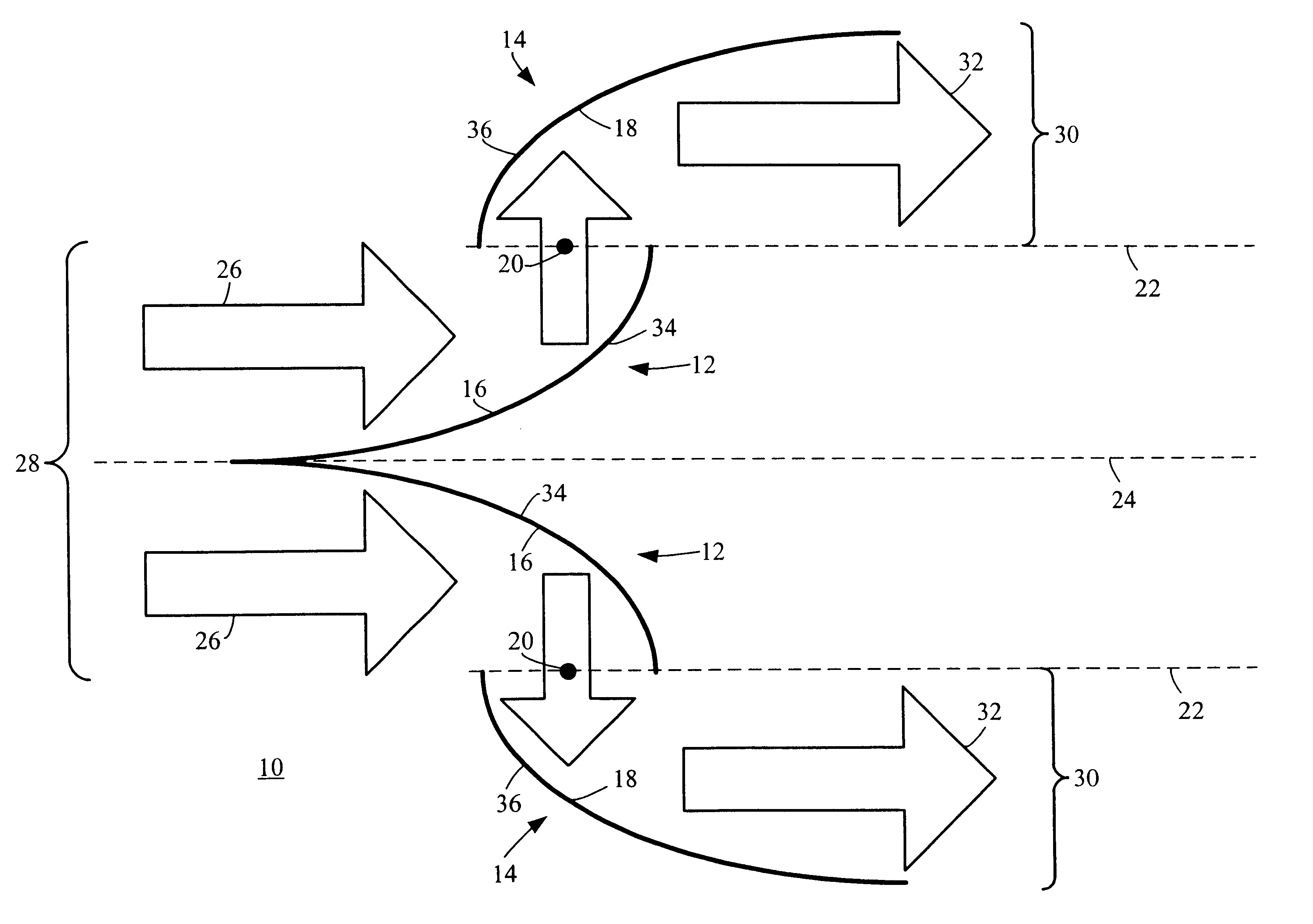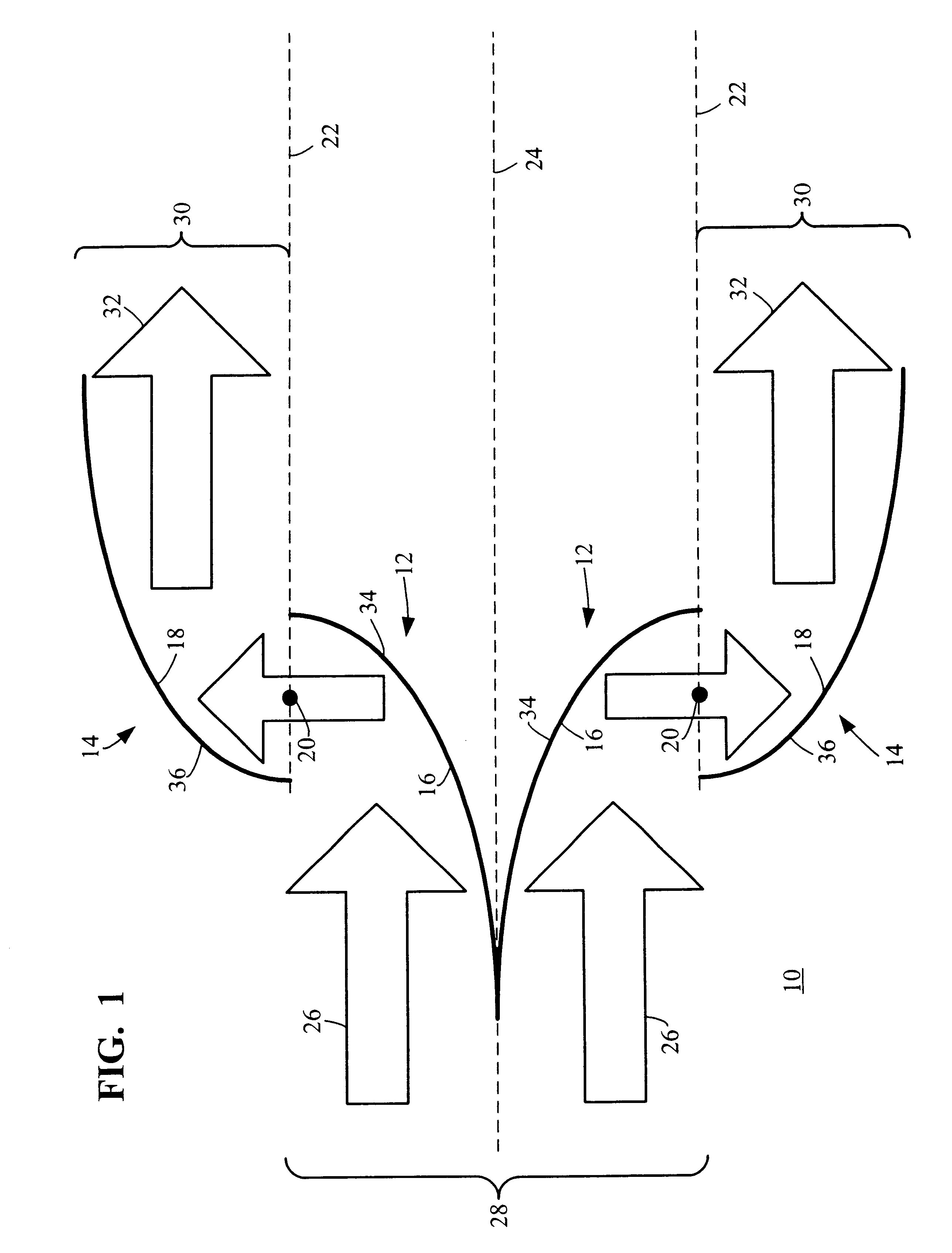Methods and apparatus for off-axis lithographic illumination
a technology of lithographic illumination and off-axis direction, applied in the field of lithography, can solve the problems of imaging problems, future generations of deep ultraviolet lithography are expected to be and the process of deep ultraviolet lithography is currently limited to forming circuits
- Summary
- Abstract
- Description
- Claims
- Application Information
AI Technical Summary
Benefits of technology
Problems solved by technology
Method used
Image
Examples
Embodiment Construction
An example of a reflective illumination shaping device 10 is shown generally in FIG. 1. Although the illumination shaping device 10 is particularly well suited for off-axis step-and-scan microlithography, or the like, persons of ordinary skill in the art will readily appreciate that the teachings of the instant invention are not limited to any particular type of microlithography or microchip manufacturing illumination exposure process. On the contrary, the teachings of the invention can be employed with virtually any optical system where shaping the illumination pattern is desired. Thus, although the illumination shaping device 10 will be described below primarily in relation to off-axis lithographic microchip manufacturing using EUVL or deep ultraviolet lithography, persons of ordinary skill in the art will readily appreciate that the apparatus and method could likewise be used with any type of lithography methods, illumination system, exposure system, etc.
Generally, the illuminati...
PUM
| Property | Measurement | Unit |
|---|---|---|
| wavelengths | aaaaa | aaaaa |
| wavelengths | aaaaa | aaaaa |
| wavelengths | aaaaa | aaaaa |
Abstract
Description
Claims
Application Information
 Login to View More
Login to View More - R&D
- Intellectual Property
- Life Sciences
- Materials
- Tech Scout
- Unparalleled Data Quality
- Higher Quality Content
- 60% Fewer Hallucinations
Browse by: Latest US Patents, China's latest patents, Technical Efficacy Thesaurus, Application Domain, Technology Topic, Popular Technical Reports.
© 2025 PatSnap. All rights reserved.Legal|Privacy policy|Modern Slavery Act Transparency Statement|Sitemap|About US| Contact US: help@patsnap.com



